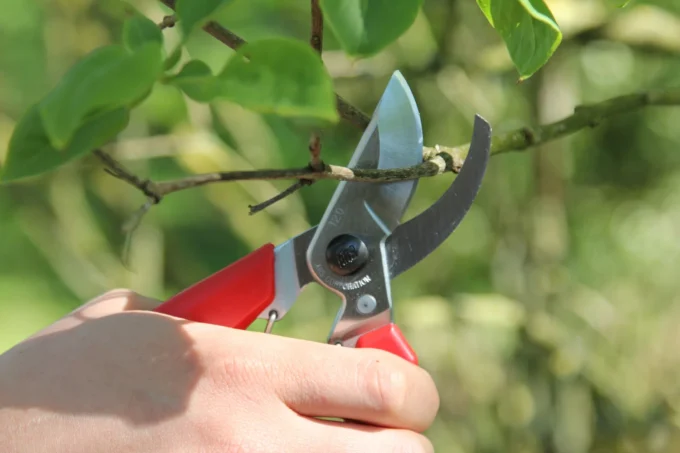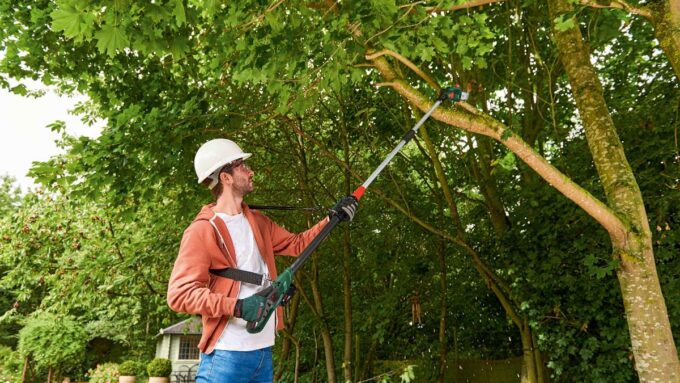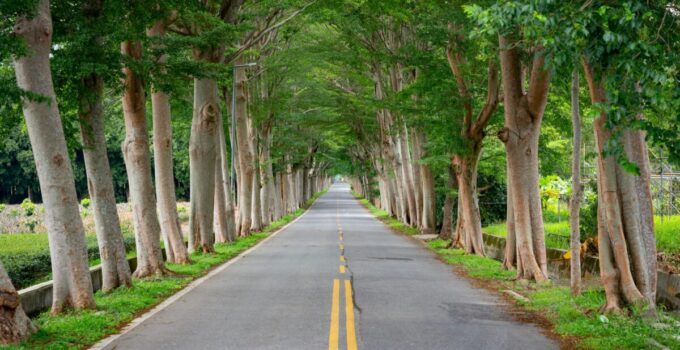Trees, those magnificent giants of nature, play a vital role in our world. They provide shade in the heat, clean our air, create homes for animals, and bring natural beauty to our surroundings. Taking care of trees isn’t just a chore; it’s an investment in the future of our environment. Among the essential practices, tree pruning stands out as a key technique that goes beyond mere appearances to ensure the well-being of these silent guardians.
Back to Basics: Caring for Trees and Pruning

Source: freepik.com
The Importance of Trees
Before we dive into the details of pruning, let’s take a moment to appreciate why trees matter so much. Trees are like the lungs of our planet, breathing in carbon dioxide and exhaling life-giving oxygen. They help combat climate change, prevent soil erosion, and offer a safe haven for countless critters. Not to mention, they make our cities and neighborhoods more beautiful and even increase property values.
Understanding the Purpose of Pruning
Pruning is like giving a tree a gentle haircut, but it’s more than just aesthetics. It’s about the tree’s health and safety. Pruning helps trees grow strong and sturdy by getting rid of dead branches and preventing potential hazards. It also lets sunlight and air reach every part of the tree, keeping it vibrant and happy. Experts at places like Pro Climb can help you figure out the best way to prune your trees.
Discovering Different Pruning Techniques
Pruning isn’t a one-size-fits-all deal. Different trees need different kinds of pruning, depending on how they grow and what you want to achieve. Here are a few common techniques:
- Crown Cleaning: This is like tidying up. It involves removing dead or sick branches.
- Thinning: Imagine giving your tree some breathing room. Thinning means selectively removing branches to let in more light and air.
- Reduction: Sometimes trees get a bit too tall for comfort. Reduction pruning trims them down to size, making them safer.
- Raising: Have a tree that’s a bit too low? Raising involves trimming the lower branches so you can walk or drive underneath.
Understanding how your tree works is key to deciding which technique to use and when to do it. Pruning during the right time, usually when the tree is sleeping in winter, reduces stress and helps it heal faster.
Becoming a Pruning Pro

Source: pinterest.com
Picking the Right Tools
Having the right tools can make pruning a breeze. Pruning shears and loppers are like scissors for smaller branches, while saws and pole pruners handle the big jobs. Remember, keeping your tools sharp and clean helps your tree heal better after pruning.
The 3-Cut Method
When it comes to dealing with those larger branches on trees, the 3-cut method is your best buddy. This method might sound a bit technical, but it’s actually pretty straightforward and super important for the health of your tree.
So, here’s the deal: big branches can be a bit stubborn when you’re trying to remove them. If you just go at it with a single cut, you might end up tearing the bark and causing some real damage. That’s where the 3-cut method comes in to save the day.
Step one, start with an undercut. Think of it like a sneak peek cut. Make this cut on the underside of the branch, a little bit away from where you want your final cut to be. This undercut takes off some of the weight and pressure, preventing the bark from tearing when you make the big cut later.
Now, onto step two, the overcut. This one’s the main event. It’s the cut that’s gonna remove that hefty branch. Start just above the undercut you made earlier, and carefully saw through the branch. This way, there’s less chance of the bark tearing and causing harm to the tree.
Last but not least, step three, the final cut. This cut is like the finishing touch. You want to make this cut nice and close to the tree’s “collar.” You know that little bump where the branch meets the trunk? That’s the collar. Cutting close to it helps the tree heal up properly. Trees are pretty cool – they can actually seal off the wound more effectively when the cut is made near the collar.
So, remember the 3-cut method when you’re dealing with big branches. Undercut to prevent tearing, overcut to remove the branch, and finish up with a final cut near the collar for proper healing. Your tree will thank you for it!
Timing and Technique Matter

Source: youtube.com
Timing is Key for Pruning Trees:
Pruning trees at the right time can make a big difference in their overall health and appearance. One good time to prune is during the tree’s rest period, which usually happens in late winter. During this time, the tree isn’t actively growing, which means it’s less stressed by the pruning process.
Late Winter Pruning:
Late winter, often around February or early March, is a great time to prune many types of trees. Since the tree is dormant, it’s not using as much energy, making it less vulnerable to the stress of pruning. This can help prevent excessive sap loss and reduce the risk of diseases or pests entering through fresh cuts.
Flowering Trees Need Special Care:
However, when it comes to flowering trees, there’s a little twist to consider. If you want your flowering tree to showcase its beautiful blooms, it’s better to prune it after it has finished flowering. This means a post-bloom prune, which usually occurs in late spring or early summer, is ideal for these trees.
Protecting Next Year’s Flowers:
Flowering trees develop their flower buds on the previous year’s growth. Pruning these trees during their rest period in late winter might inadvertently remove these budding branches, resulting in fewer or no blooms next year. That’s why waiting until after the tree has bloomed to prune it can help you enjoy a spectacular floral display year after year.
Avoiding Mistakes and Keeping Trees Healthy

Source: freepik.com
Steering Clear of Bad Moves
While pruning does wonders, some practices are no-nos. Tree topping is one of them. It involves chopping off big chunks of a tree, weakening its structure and making it more susceptible to problems. Another mistake is “lion’s tailing,” where too much foliage is removed, messing with the tree’s natural growth.
The Consequences of Bad Pruning
Bad pruning can lead to unhealthy trees. Cuts that aren’t done right become doors for pests and diseases. Over-pruned trees struggle to make enough energy, which affects their growth and overall health.
Staying Disease-Free and Keeping Up Maintenance
Keeping Harmful Stuff at Bay
Pruning isn’t just about making a tree look good; it’s also about keeping it healthy. Regular check-ups during pruning sessions can spot diseases or pests early, giving you time to act. Combining proper fertilizing and mulching strengthens the tree’s defenses against threats.
Why the Pros Matter
Sometimes, it’s best to let the professionals handle things. Certified tree experts know how to check tree health, spot dangers, and decide what needs to be done. With their know-how, pruning happens right and matches the tree’s needs.
Caring All Year Round

Source: youtube.com
Tree care is a full-time job. Regular watering, especially when it’s dry, keeps the roots happy. Watching for signs of trouble, like wilting leaves or odd discoloration, means you can step in early. And letting the pros check on your tree’s health now and then keeps it strong and blooming.
More Than Just Trees
Caring for trees isn’t just about your backyard. Trees help the planet by soaking up carbon dioxide, which helps fight climate change. When we take care of trees, we’re investing in a cleaner, healthier world for the generations to come.
In a nutshell, pruning is more than just snipping branches; it’s about a tree’s health and beauty. By learning the right techniques, avoiding mistakes, and calling in the pros when needed, we keep our trees lively and robust. Embracing sustainable tree care isn’t just a duty—it’s a way to make the world greener and brighter for everyone.







